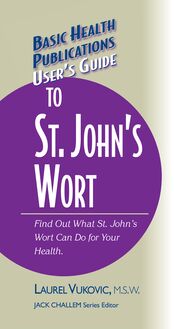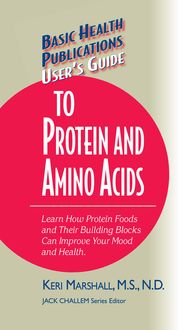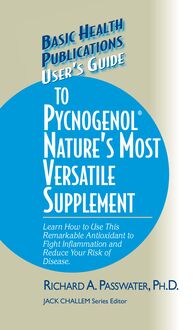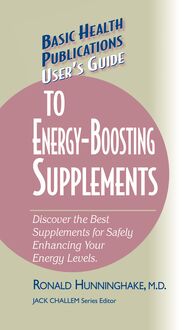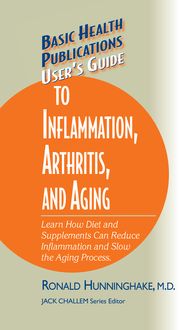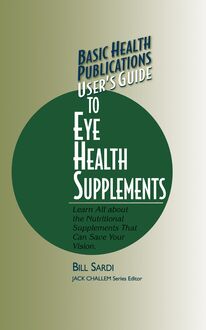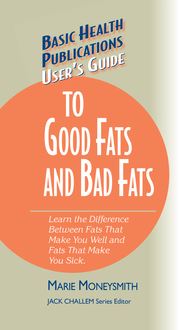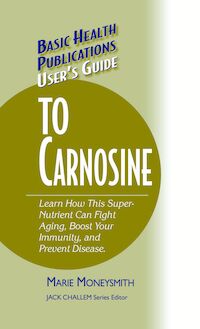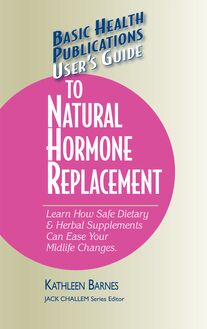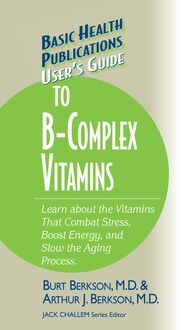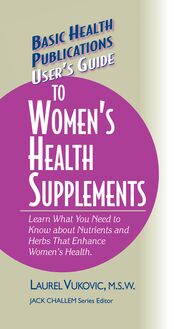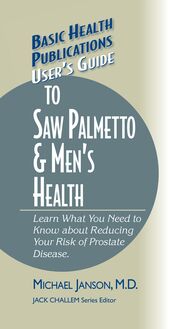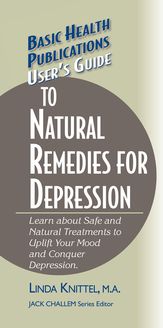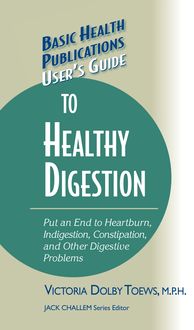User's Guide to Saw Palmetto & Men's Health , livre ebook
42
pages
English
Ebooks
2003
Vous pourrez modifier la taille du texte de cet ouvrage
Obtenez un accès à la bibliothèque pour le consulter en ligne En savoir plus
Découvre YouScribe en t'inscrivant gratuitement
Découvre YouScribe en t'inscrivant gratuitement
42
pages
English
Ebooks
2003
Vous pourrez modifier la taille du texte de cet ouvrage
Obtenez un accès à la bibliothèque pour le consulter en ligne En savoir plus
Publié par
Date de parution
01 janvier 2003
Nombre de lectures
1
EAN13
9781591206309
Langue
English
Poids de l'ouvrage
1 Mo
Publié par
Date de parution
01 janvier 2003
Nombre de lectures
1
EAN13
9781591206309
Langue
English
Poids de l'ouvrage
1 Mo
The information contained in this book is based upon the research and personal and professional experiences of the author. It is not intended as a substitute for consulting with your physician or other healthcare provider. Any attempt to diagnose and treat an illness should be done under the direction of a healthcare professional.
The publisher does not advocate the use of any particular healthcare protocol but believes the information in this book should be available to the public. The publisher and author are not responsible for any adverse effects or consequences resulting from the use of the suggestions, preparations, or procedures discussed in this book. Should the reader have any questions concerning the appropriateness of any procedures or preparation mentioned, the author and the publisher strongly suggest consulting a professional healthcare advisor.
Series Editor: Jack Challem Editor: Roberta W. Waddell Typesetter: Gary A. Rosenberg Series Cover Designer: Mike Stromberg
Basic Health Publications User’s Guides are published by Basic Health Publications, Inc.
8200 Boulevard East North Bergen, NJ 07047 1-800-575-8890
Copyright © 2002 by Michael Janson
ISBN-13: 978-1-59120-630-9
ISBN: 1-59120-030-X
All rights reserved. No part of this publication may be reproduced, stored in a retrieval system, or transmitted, in any form or by any means, electronic, mechanical, photocopying, recording, or otherwise, without the prior written consent of the copyright owner.
Printed in the United States of America
10 9 8 7 6 5 4 3 2 1
C ONTENTS
Introduction
1. The Prostate Gland in Men’s Health
2. Conventional Medical Treatment of the Prostate
3. Saw Palmetto: The Men’s Herb
4. Prostate Research: How Is It Done?
5. Guidelines for Buying and Using Saw Palmetto
6. Other Steps to a Healthy Prostate
7. Sexual Function and Men’s Health
8. Heart Disease and Men’s Health
Conclusion
Selected References
Other Books and Resources
I NTRODUCTION
S
ome dramatic changes have been taking place in Western medicine in the past few years, and you have the opportunity to benefit from some of these changes. Costs of healthcare have been skyrocketing, and the government and insurance companies have tried to implement some form of control on the costs by managing the way doctors treat patients. At the same time, there has been an explosive growth in demand for treatments that are less invasive than surgery and less risky than prescription medications.
Why the changes? Consider that prescription medications are the fourth or fifth leading cause of death in the United States, with more than 100,000 people dying every year from their side effects, even when taken correctly. Heart bypass surgery is the ninth leading cause of death. Safe alternatives to drugs and surgery are available for almost every condition that plagues our society, but most doctors are only just beginning to learn about them. While still resistant to change, the medical profession is starting to recognize the benefits of natural treatments to complement or even replace some conventional medical care.
When I finished medical school in 1970, I knew very little about nutrition. Although I did learn the basic biochemistry of the individual nutrients, I did not have any training in how that related to good nutrition and dietary habits, or how the nutrients could be used as dietary supplements for treatment of different medical conditions. I also had no information about herbs and botanicals, which had been the mainstay of medicine in this country before this century, and still contribute greatly to medical therapy in many countries.
The German government, recognizing the popularity and importance of herbs in medicine, established a commission (commission E) to look into botanical medicine and establish some standards by which doctors could understand how to use herbs as part of their medical practices. In Germany and other countries, a large number of general practitioners use these herbs routinely, but they have still not been accepted in the United States. A small percentage of doctors here have been using these treatments—including vitamins, minerals, amino acids, essential oils, accessory nutrients, and botanicals—for many years with great success.
Often, these doctors have been the objects of ridicule among their peers. They have also been the objects of disciplinary action by their medical boards, which regulate the practice of medicine in every state. Public demand, fortunately, has been forcing a change in this policy, and creating a more congenial atmosphere for innovative physicians. Many states have now passed legislation protecting doctors from these medical board actions, and making sure that patients have access to alternatives to drugs and surgery. A movement is underway to change federal regulations to accomplish this on a nationwide scale, and everyone will benefit from these changes (except perhaps some drug companies).
In addition to beneficial foods, vitamins, minerals, essential fatty acids, and amino acids, herbs and botanicals are important contributors to this resurgence in natural healthcare. One of the most valuable dietary supplements has been the botanical product derived from the berries of the saw palmetto tree. In addition to European doctors, physicians in the United States are recommending saw palmetto for the treatment of prostate disorders. This is based on its long history of use in folk medicine for the treatment of urinary tract disorders, and on the recent research supporting its value. The German commission, and even the United States Food and Drug Administration, have evaluated some of this information. The results of their investigations and their conclusions may surprise you.
The combination of research and clinical experience with saw palmetto gives you the opportunity to use this simple, safe, effective, and cost-effective dietary supplement to manage your prostate problems, and possibly avoid medication and surgery. However, saw palmetto is only a part of a complete program for prostate health, and prostate health is just one part of the overall picture of men’s health. Functioning fully in every way, and maintaining that function for as long as possible as you age, is the end result of taking good care of yourself.
CHAPTER 1
T HE P ROSTATE G LAND IN M EN’S H EALTH
A
lmost everyone has heard about the prostate gland, but you may not know what it is or how it is important in health. As men age, it is almost certain that they will become intimately familiar with the details of their prostate gland, and possibly have to deal with it as a health issue. The more you know about your prostate, the easier it will be to understand how to help yourself or help your doctor understand the treatments you prefer.
Prostate Anatomy and Function
Urethra
A canal that takes the urine from the bladder, past the prostate, and out through the penis. Semen is also discharged through it.
The prostate gland is a small organ found only in men that sits below and behind the bladder and above and in front of the rectum. It consists of a collection of ducts, fibrous tissue, glandular tissue, and muscle tissue, and it surrounds the urethra, which takes the urine from the bladder through the penis and out. The normal prostate is about the size of a walnut, weighs about two-thirds of an ounce (20 g), and produces prostatic fluids that combine with sperm from the testicles and other secretions to form semen. These fluids help sperm survive and improve their ability to travel (motility).
Prostate
A small organ in men that sits below and behind the bladder and produces prostatic fluids that help form semen.
The prostate also has some muscle fibers surrounding the urethra that help with urination. When they contract, they push urine out to aid in emptying the bladder. They also play a role during orgasm by pushing some of the prostate fluid and some of the sperm from the testicles into the urethra and out through the penis. Although it is very small, the strategic location of the prostate surrounding the urethra leads to far more health problems and medical care costs than would be predicted from its size alone.
Prostate Problems with Aging
Hyperplasia
Increased growth of cells of any kind, leading to enlargement of the organ. Also known as hypertrophy in reference to the prostate.
One of the most common, and problematic, changes in the prostate results from its gradual enlargement with age (benign enlargement, not a cancer). This enlargement eventually leads to compression of the urethra and restriction of the urine flow. It is called benign prostatic hyperplasia (or hypertrophy—an older term that is still used), abbreviated as BPH. In addition to the direct obstruction that enlargement causes (the mechanical or static component of BPH), the muscles and nerves of the prostate, bladder outlet, and urethra can contribute further to the symptoms (the dynamic component).
Prostate problems are very common, indeed. More than 50 percent of men over age forty have enlarged prostate glands. By the time they reach eighty years old, 80 to 90 percent of men have an enlarged prostate. Although surgery to remove some of the prostate tissue is a common procedure for benign enlargement, it is not always necessary; only about 10 percent of men end up having prostate surgery at some time in their lives. According to a 1996 study, enlarged prostates lead to about $4 billion in healthcare expenditures.
There are also other possible problems with the prostate. It can be inflamed as a result of infection with bacteria, or even more frequently, with other organisms, leading to local aching, pain and burning on urination, testicular discomfort, and low back pain, as well as white blood cells in the prostatic secretions and urine. This prostate inflammation, or prostatitis, can be acute or chronic. It is even
